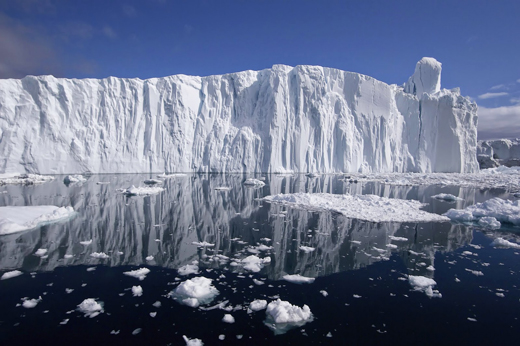For thousands of years, the massive glaciers of Earth’s polar regions have remained relatively stable, the ice locked into mountainous shapes that ebbed in warmer months but gained back their bulk in winter. In recent decades, however, warmer temperatures have started rapidly thawing these frozen giants. It’s becoming more common for sheets of ice, one kilometer tall, to shift, crack and tumble into the sea, splitting from their mother glaciers in an explosive process known as calving.
"Imagine a sheer, vertical ice face three times as tall as the tallest building in Atlanta breaking off from a glacier and flipping 90 degrees," says Emory physicist Justin Burton. "In my lab, we can calculate how much energy is released during one of these events, which can be equivalent to several nuclear bombs."
Burton studies the geophysics of calving icebergs in order to better understand and predict effects of climate change, such as sea-level rise.
"Ice coverage is one of the most sensitive indicators of climate change," he says. About half of the loss of ice from the polar ice sheets is occurring due to melting and half due to iceberg calving. While it’s more straightforward to estimate iceberg melt rates, their calving rates are much harder to pin down.

